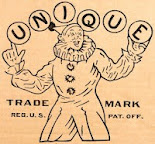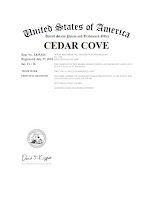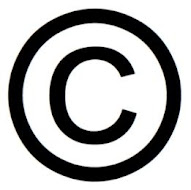 Choosing
the perfect book title is not just a marketing decision,
it is a legal determination. It should provoke
interest and curiosity in the book (or the product or service you sell on the back end) and not a lawsuit by an aggrieved
trademark owner or removal of your listing via Amazon's report a violation and takedown tool.
Choosing
the perfect book title is not just a marketing decision,
it is a legal determination. It should provoke
interest and curiosity in the book (or the product or service you sell on the back end) and not a lawsuit by an aggrieved
trademark owner or removal of your listing via Amazon's report a violation and takedown tool. When doing a screening search, the central question is whether there is a confusing similarity to someone else's mark. In evaluating the likelihood of confusion, the three key considerations are:
- Has the mark been registered?
- How similar are the marks?
- Are the goods or services related?
Similarities in sight, sound, and meaning, and the relatedness of the senior user's goods and services are the key vectors in any trademark infringement analysis.
If the title you’ve selected is already registered by someone for related goods or services, absent a valid First Amendment defense (discussed later), soldier on and select another title. Put another way, if they cared enough to register their mark, there’s a good chance they are prepared to fight to protect it.
Free Expression and Fair Use Exceptions
Not every use of a trademark (or similar title) without permission is an infringement. There are many legitimate reasons to use a particular word or phrase as the title of a work that doesn’t have anything to do with trading on another party's goodwill, fame, or reputation. For example, words that merely describe the contents of a work are, at best, weak trademarks and receive no protection without proof that consumers associate them with a particular source. By source, the Trademark Act refers to the source of the physical or virtual goods rather than the author.
No matter how clever, single titles are not entitled to trademark registration. However, if a single title attains secondary meaning -- a level of commercial magnetism associated with a runaway bestseller -- it can still be protected absent registration.
Generic
titles (100 Best Science Fiction Movies) standing alone are not
entitled to trademark protection.
In analyzing whether a title infringes a trademark or another title, courts balance the right to speak freely against the trademark owner's rights. While using a disclaimer (the subject of a future post) is not a magic bullet, a prominent disclaimer can help reduce the potential for consumer confusion.
For a deeper dive on title clearance, click here.
A Warning Before You Start Your Search
Given the subjective nature of of trademark law, deciding on your title depends on your risk tolerance, informed by search quality and legal analysis. When uncertain, it's wise to seek guidance from a trademark attorney. They can assess if your title is suitable for registration, and assist you in navigating the trademark registration maze.
How to Trademark a Book Title
A trademark registration gives you the exclusive right to use a trademark. Once you register a trademark, you can stop others from using both identical and confusingly similar marks for related goods or services.
However, a single book title cannot be registered as a trademark unless it is used for a series of works (e.g., Harry Potter and the Philosopher's Stone, Harry Potter and the Chamber of Secrets). In other words, a trademark can only be tied to a series of literary works, not a single title.
The rationale for the “single title rule” is that once a book enters the public domain, it should remain there, and the public should have the right to identify it by its original title.
So how do you protect the first title in what you hope will be the next Hunger Games trilogy or Harry Potter series of fantasy novels?
How Do I Protect the First Book in a Series?
The are to two ways to acquire trademark rights. The first is based on being the first to use the mark in connection with the sale or marketing of specific goods or services. The second is to be the first to file an Intent to Use application with the Patent and Trademark Office. After the PTO trademark examiner approves your Intent to Use application, you will have six months within which to file a Statement of Use. If you need more time to publish the second book in the series, you can file for multiple six-month extensions. By filing an Intent to Use application, you are staking out a claim to the title. Assuming your application meets the minimum filing requirements when the second book in the series is published and a Statement of Use is filed, the Trademark Office will re-evaluate the application. The key benefit of filing on this basis is that an Intent to Use application will temporarily block other later filed trademark applications for identical (or confusingly similar) marks for related goods.
When you obtain the registration for your title, the date you filed the Intent to Use application will serve as the date of first use. That gives you priority over those who began using the trademark after you filed.A slightly different process is involved if you have an established book series. In either instance, you will need to publish book two in the series to obtain a federal registration.
Unfair Competition
Unfair competition law is commonly used as a cudgel to go after bad actors who try to deceive consumers into falsely believing their goods (including books, blogs, and businesses) have been approved or endorsed by others. Even where a trademark has not been registered, it’s a violation of unfair competition law – and commercial morality -- to misrepresent the source or approval of a creative work.
Did you know the trademark for an existing business could prevent you from using a book title?
Case & Comment. In a case involving the Ralph Lauren Polo brand, a court permanently stopped the unauthorized use of the name Polo for a lifestyle magazine. In granting the injunction, the court rationalized that the magazine and Ralph Lauren’s Polo brand were associated with fashion, elegance, and affluent lifestyles in the public's mind. While the First Amendment will allow you to write a book about Ralph Lauren and the fashion brand’s cultural significance, you cannot ride on Ralph Lauren’s designer coattails to boost your business by falsely implying an association when none exists.
For a deeper dive on trademark fair use and title clearance, click here.
###
TITLE CLEARANCE CHECKLIST
1. Avoid titles that would confuse people into mistakenly believing that your work is associated with, endorsed by, or licensed for use by another party.
2. Likelihood of confusion (the test for trademark infringement) isn’t just about the confusion between similar literary titles. Protectable titles in one media (movies, video games, podcasts) may be protected in different media (books, sound recordings) if there is a likelihood of confusion.
3. In evaluating search results, consider the following:
4. Important! Marks only need to be confusingly similar, not exactly alike. Don’t ignore descriptive marks that have become associated with a single source over time.
5. Protectable titles in one media may be protected in different media if they are marketed through the same trade channels and sold to the same class of consumers or if it’s reasonable for consumers to believe the trademark owner approved the use of the title.
6. Descriptive terms that have not achieved public recognition due to widespread media attention and strong sales are not protected under trademark law and cannot serve as the basis of an infringement claim.
7. Not just words, but the look and feel of a book jacket can infringe an existing trademark. Courts look at the total image of the book cover (format, lettering, distinctive words, illustrations, colors used, and layout) to ascertain if there’s a likelihood of confusion.
8. The mere use of a trademark in a title is not an infringement if the title is (a) artistically relevant to the underlying work and (b) no explicit suggestion is made that the trademark owner endorsed, sponsored, or approved the work. See #7, #14
9. A single book or other creative work title is not entitled to trademark registration unless used for a series of creative works. See #10
10. While a single title for a creative work (e.g., book, movie, or song) cannot be registered as a trademark if it becomes broadly popular and associated with a single source, especially when it starts generating spin-offs and merchandise licensing tie-ins, it may be protected under unfair competition law.
11. It is fair use if you use a trademark in its descriptive sense to truthfully describe the trademark owner’s goods or services, provided there's no suggestion that the trademark owner endorsed, sponsored, or approved the work.
12. Search for registered trademarks using the Trademark Office’s free TESS database. Next, search your favorite search engine for common law (unregistered) marks for related goods and services. If you intend to register your title after you've ruled out obvious conflicts, obtaining a full search and registrability opinion is highly recommended.
13. While title clearance and trademark searches are similar, it is best to work with a trademark attorney to register a series title or the name of a business. They can tell you if the mark is registrable and improve the chances of registration.
14. WHEN IN DOUBT, CONTACT A TRADEMARK ATTORNEY.
For More Information:
Contract attorney Lloyd Jassin at jassin@copylaw.org or at (212) 354-4442. His offices are in the heart of Times Square, in The Paramount Bldg., at 1501 Broadway, FL 12, NYC, 10036. Follow the Law Firm and Lloyd on Twitter at http://www.twitter.com/lloydjassin
DISCLAIMER / TERMS OF USE
Not Legal Advice. The
information contained in this blog is intended as general
advice. Because the law is not static, and one situation may differ
from the next, we cannot assume responsibility for any actions taken
based on information published here. Be aware that the law may vary
from state to state. Therefore, this blog cannot replace the advice of
an experienced attorney. No attorney-client relationship is created by
your access to or use of this website. Contacting us by email does not
create an attorney-client relationship. If you wish to establish a
professional relationship, it must be done through a mutual agreement
in writing. Please do not send us any confidential information until an
attorney-client relationship has been established.
Limitation of Liability. We disclaim any liability, loss, damage, injury, or cost (including, without limitation, attorneys' fees, lost profits, or data) caused by the contents of this blog or website.
Links. This website contains links to third-party websites and other resources. These links are provided solely for your convenience and for educational purposes. They should not be construed as endorsements by the Law Offices of Lloyd J. Jassin.
Jurisdiction. Using this website, you have irrevocably agreed to the U.S. federal and state courts' sole and exclusive jurisdiction and venue in New York City, USA. Any action, suit, or proceeding involving the use of this website, the information contained in this website, to the extent permitted by federal law, will be governed by the laws of the State of New York (excluding New York's choice of law rules) in the absence of applicable federal law.
Trademarks. Copylaw is a registered trademark of the Law Office of Lloyd J. Jassin
© 2022 Lloyd J. Jassin COPYLAW is a service mark of Lloyd J. Jassin
Related Posts
Common Copyright Permission Myths




